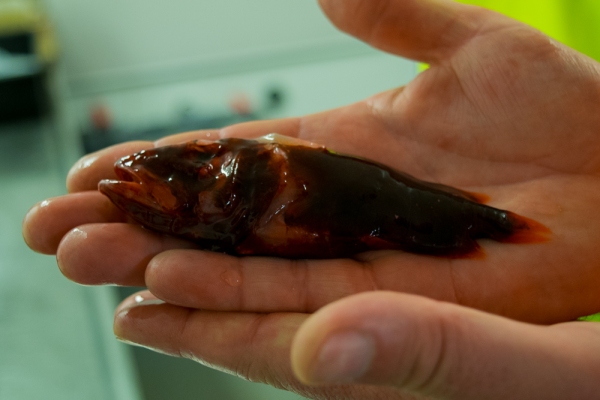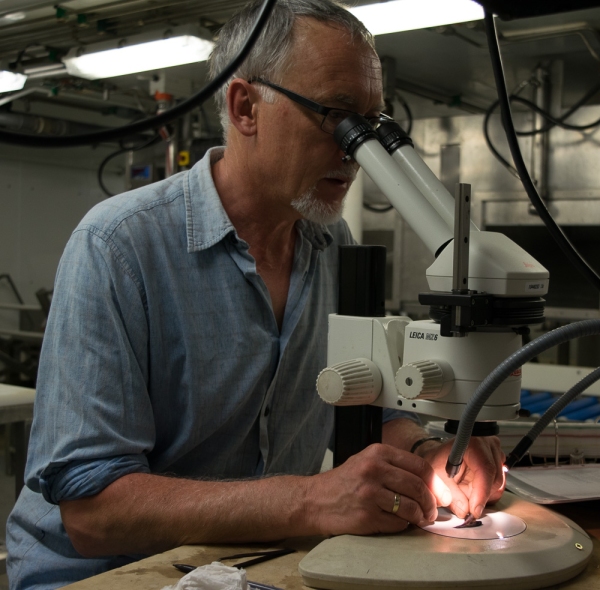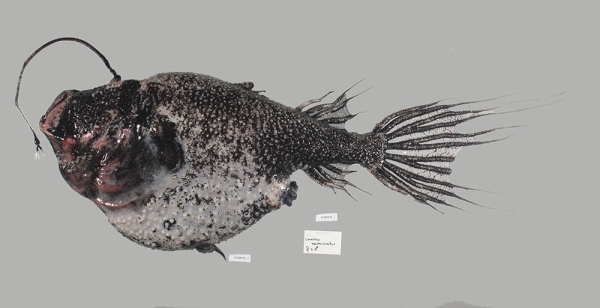27 October 2016
We’re into our fifth day of sampling up here at Raoul Island and all is going well.
The weather is outstandingly good, which means that we’re getting a lot of sampling done. During the daylight hours the whale team and the divers work in the coastal waters around the Island, meaning that Tangaroa is in close to shore and for safety within sight of the team on the water at all times. Then at night we move off shore to complete the deeper water sampling for fishes and invertebrates. The day-time period is spent mapping the seafloor topography by the island, line fishing for fish samples from the ship, and collecting surface plankton.
On board we have a fish team from Te Papa and the Auckland Museum and they have had some very exciting finds.
We’ve been using additional types of gear this trip to what has previously been used for scientific sampling up here. Previously there have been fish traps, line fishing and coastal dive collections from the shallow waters around the island. This trip we’re also sampling with a beam trawl, which is a small trawl that goes along the seafloor, and two types of midwater trawl, which as the name suggests fishes off the seafloor in the middle of the water column. We get different types of fish from the two different trawls, the beam trawl targets fish that live on the seafloor, while the midwater trawls target fishes that live in the water column.
The speed at which the trawls are towed and recovered is relatively slow, which means that when the samples come on board they are in good condition. The fish we are targeting are deep sea fish and are delicate animals. They have scales that fall off easily and very thin skin, so often can arrive on deck in a rather battered condition. Additionally, these fish live deep! Deeper than 1000m and at that depth there is a lot of pressure, which the fish have adapted to live in. When the trawl comes up slowly it gives the fish time to adjust to the pressure as well, contributing to their good condition when they arrive on deck.
Last night we deployed the midwater trawl to 2000m, in the catch the fish team recorded 40 different taxa of fish, of which about a third of them are new records for the Kermadec Region and several are also very likely new species records for New Zealand.
Today’s exciting finds included a whale fish (which is not as large as a whale!) and the largest angler fish Andrew Stewart (Te Papa’s fish taxonomist) has ever seen.
Dr Tom Trnski, from the Auckland Museum, was very excited to see the whale fish, because he had it on his bucket list of fishes he wanted to catch on this trip. The whale fish catch is rare in collections because they live deeper than 1500m in the midwater and people rarely collect samples from the midwater this deep.
Any angler fish collection is also exciting, because like whale fish, they also live in the midwater deeper than 1500m and are not often sampled. So far this trip, the smallest angler fish collected was about 3cm long, and the largest close to 80cm long.



